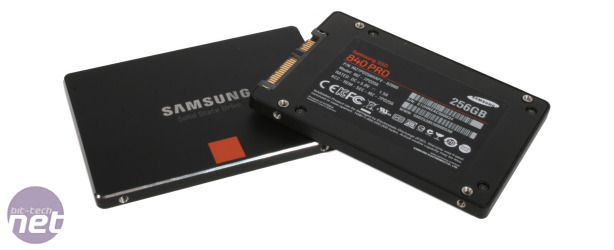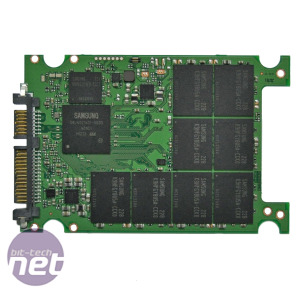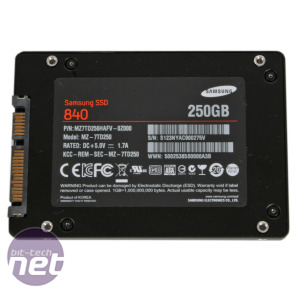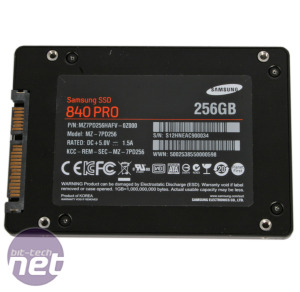
The SSD Catch-up
The last few months have seen plenty of activity in the SSD market, with a number of new drives launching from the likes of OCZ, Samsung and Corsair looking to take the SATA 6Gbps performance crown. With drives having reached the limited of SATA 6Gbps bandwidth (at least in terms of sequential read speeds) with the launch of the SandForce 2281 drive controller over 21 months ago, how much more room is there to go even faster? The answer is actually, quite a bit as we’ll demonstrate whilst pitting these new contenders against each other and the best from the last generation.Samsung SSD 840 Pro 256GB
Manufacturer: SamsungUK Price (as reviewed): £185 (inc VAT)
US Price(as reviewed): $269.99 (ex tax)
Samsung SSD 840 250GB
Manufacturer: SamsungUK Price (as reviewed): £139.98 (inc VAT)
US Price(as reviewed): $179.99 (ex tax)
Samsung’s sequel to its impressive SSD 830 line of SSDs has been split between a performance orientated ‘Pro’ and value-oriented ‘non-Pro’ versions. Although both use the same packaging (which has sadly ditched the brushed aluminium casing of the SSD 830) and 4th generation Samsung MDX controller, they’re very different when it comes to NAND. While the SSD 840 Pro uses typical 21nm Toggle MLC (multi-level cell) NAND, the standard SSD 840 is the first SSD to enter our labs using Samsung’s TLC (triple-level cell) NAND.
The SSD 840 and SSD 840 pro both ship in the same black casing - we miss the brushed aluminium
Whereas the SLC (single level cell) NAND used in enterprise-level SSDs stores data in either on or off states (allowing for superior performance), MLC stores data in up to four states and TLC takes this one step further, allowing for up to eight states. This effectively increases the NAND capacity per transistor by fifty per cent, at the cost of performance (there are now more states to check) and write endurance. While we've gotten used to most MLC NAND-powered drives offering 3K write cycles or more, TLC potentially has much lower write cycle count due to the finer voltage granulation required to differentiate between the eight different NAND states. However, even if this lower TLC endurance (which NAND manufacturers are understandably quiet on) reduces the write cycles by 65 per cent to 1,000 cycles, it’s still enough for the 250GB SSD 840 to deliver over 232TB of writes over its lifespan. Considering its three year warranty (five year on the SSD 840 pro 256GB), there’s little to worry about in home user circumstances.
The use of TLC NAND makes for dramatically different write performance between the SSD 840 and SSD 840 pro, despite an otherwise identical PCB
A more tangible negative for TLC is the drop in write performance, which is significant. Despite sharing the same controller and cache, the SSD 840 Pro lists theoretical best write speeds of 520MB/sec, while the SSD 840 250GB can only offer writes of up to 250MB/sec, less than half.
As well as the NAND difference between the two (and the subsequent associated performance drop), the SSD 840 is also slightly more over-provisioned. While both drives carry 256GB of NAND, the SSD 840’s formatted capacity of 232.88GB means 9.1 per cent of the drive’s space has been handed over to spare area, whilst the 238.47GB of the SSD 840 Pro sees a more conventional 6.9 per cent over provision. The level of over-provisioning of both drives can be increased in Samsung’s configuration software should endurance be of particular concern, but as a minimum, the cheaper 840 offers that marginally lower capacity.
More aggressive over-provisioning means the SSD 840 offers lower capacities
Other than the NAND and over-provisioning though, the SSD 840 250GB and SSD 840 Pro 256GB are identical, using the same MDX controller and 512MB DDR2 1066MHz cache, although lower capacity versions do ship with a smaller cache.
As it used the pricier NAND, the SSD 840 Pro carries a price premium and can currently be found for around £185 for the 256GB version (£0.77/GB), while the TLC equipped SSD 840 250GB is that much cheaper at around £140 (£0.60/GB).
SSD 840 Pro 256GB Specifications
Interface: SATA 6GbpsNominal capacity: 256GB
Formatted capacity: 238.47GB (6.9 per cent over provision)
Controller: Samsung MDX (S4LN021X01)
Cache: 128MB DDR2-800
Memory type/amount: 8x Samsung 32GB 2xnm MLC Toggle NAND flash
Warranty: Five years
SSD 840 250GB Specifications
Interface: SATA 6GbpsNominal capacity: 250GB
Formatted capacity: 232.88.13GB (9.1 per cent over provision)
Controller: Samsung MDX (S4LN021X01)
Cache: 512MB DDR2-1,066
Memory type/amount: 8x Samsung 32GB 2xnm TLC Toggle NAND flash
Warranty: Three years

MSI MPG Velox 100R Chassis Review
October 14 2021 | 15:04













Want to comment? Please log in.